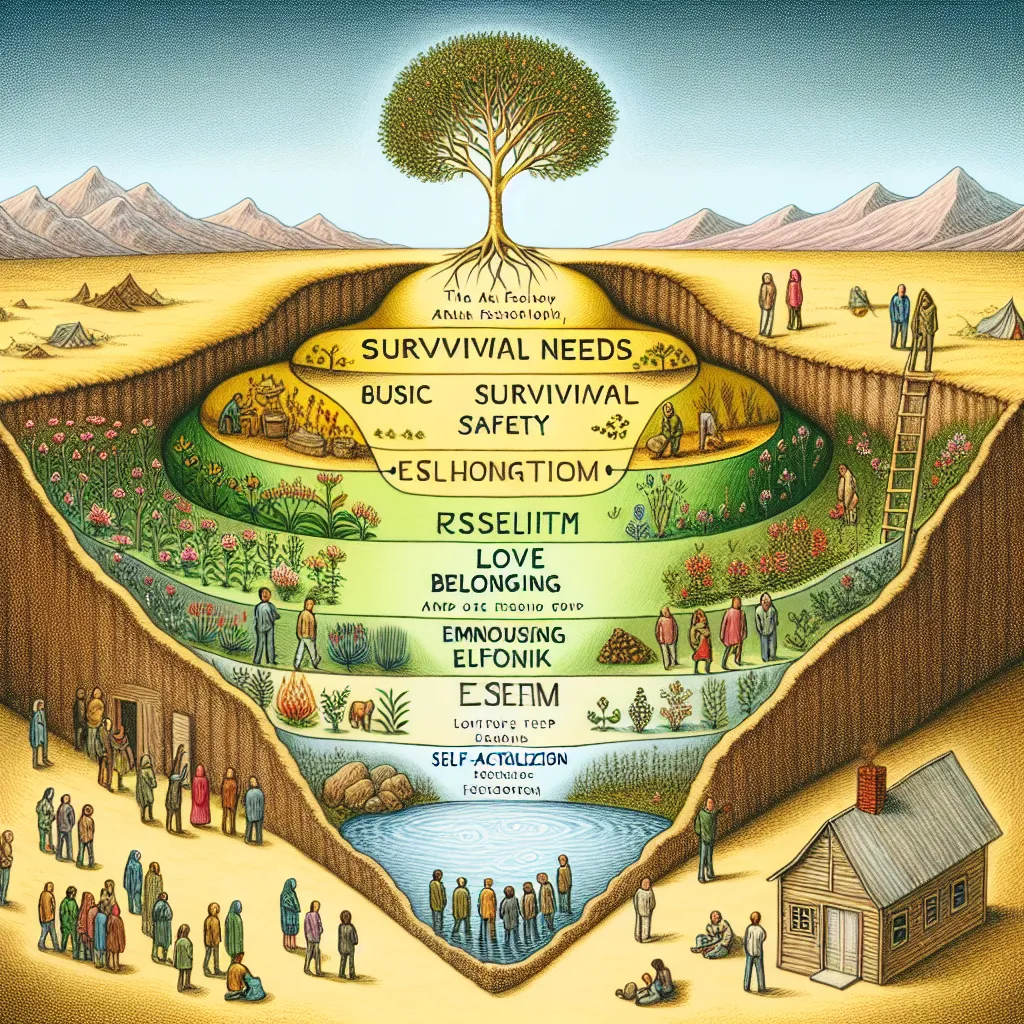Understanding the Psychological Journey of Abraham Maslow
Abraham Maslow occupies a central place in the annals of psychology, primarily due to his development of the hierarchy of needs—a framework proposing that human motivation is grounded in the satisfaction of a series of physiological and psychological needs. This unique psychological journey that Maslow embarked on has not only revolutionized thinking within the discipline but also extended its impact into realms such as business, education, and self-help. To truly grasp the significance of his contributions, it is essential to explore the various stages of his career and the evolution of his theories.
Born in Brooklyn, New York, in 1908 to Russian Jewish immigrants, Maslow’s early experiences were marred by alienation and loneliness, fostering an early interest in human behavior and psychological well-being. Pursuing academics as his refuge, Maslow went on to study law at the City College of New York (CCNY) before transferring to the University of Wisconsin, where he found his true vocation in psychology. At Wisconsin, not only did he complete his undergraduate degree, but also he obtained his master’s and doctoral degrees in psychology, culminating in his doctoral thesis on “Learning, Retention, and Reproduction of Knowledge in Rats.”
Maslow’s interest in human potential and what he would later call ‘self-actualization’ began with his mentor at Wisconsin, the behaviorist psychologist Harry Harlow. Through Harlow, who was famous for his experiments with rhesus monkeys, Maslow realized that understanding the full spectrum of human psychology would require moving beyond the prevailing behaviorist limitations of the era, which predominantly focused on observable actions and stimuli.
After obtaining his doctorate in 1934, Maslow’s journey led him to Columbia University, where he worked with the renowned Gestalt psychologist Max Wertheimer and later with Alfred Adler, one of Freud’s early colleagues. It was during this period that he began formulating his own ideas about human motivation, influenced but not constrained by the perspectives of his mentors.
Maslow’s most significant contributions emerged once he began his tenure at Brooklyn College. Here he encountered intellectuals who would further inspire his thinking, among them the anthropologist Ruth Benedict and the psychologist Kurt Goldstein. Both Benedict and Goldstein emphasized the importance of studying the ‘healthier’ side of humanity, which resonated with Maslow’s growing belief that psychology needed to investigate not just pathology but also the heights of human experience.
Out of these influences came Maslow’s seminal work, “A Theory of Human Motivation,” published in 1943. In this paper, he proposed the hierarchy of needs, suggesting that people are motivated to fulfill basic needs before moving on to other needs culminating in ‘self-actualization.’ Maslow’s hierarchy of needs is often depicted as a pyramid, with the most fundamental levels of need—such as physiological and safety needs—at the base, and the need for self-actualization at the peak.
Throughout the 1950s and 1960s, Maslow expanded on these concepts, exploring further the characteristics of self-actualizing individuals. He noted traits such as an acceptance of self and others, a focus on problem-solving, a need for privacy, and an appreciation of life’s experiences among these people. His 1962 book, “Toward a Psychology of Being,” presented these ideas in greater depth, becoming a cornerstone of Humanistic Psychology, a movement he co-founded that focused on the human capacity for growth and development.
Maslow’s psychological journey took a more philosophical turn in his later years, with the introduction of concepts like ‘peak experiences’—profound moments of love, understanding, happiness, or rapture where individuals feel more whole, alive, self-sufficient, and yet a part of the world. Furthermore, he reflected on ‘transcendence,’ suggesting that the highest level of human fulfillment might extend beyond self-actualization, to include the welfare and well-being of others.
Tragically, Maslow’s journey was cut short when he died of a heart attack in 1970. However, his legacy endures through his profound influence on both psychological theory and practice. His ideas have been applied extensively within various fields, including education, where his principles have underscored the importance of fostering an environment conducive to meeting students’ basic needs before expecting them to achieve higher-level cognitive tasks. In business, the incorporation of Maslow’s theories has led to the development of more holistic approaches to employee motivation and organizational structure.
In contemporary times, Maslow’s hierarchy of needs still holds sway in many areas and has been adapted for digital marketing strategies, where understanding consumer motivation is crucial. SEO professionals and content marketers apply principles derived from Maslow’s work to tailor content that addresses various levels of consumer needs—from basic product information to building brand loyalty.
In conclusion, the psychological journey of Abraham Maslow is one marked by profound insights into human nature and motivation. His own path—from lonely child to seminal psychologist—mirrors his theory of progression through the hierarchy of needs toward self-actualization. Maslow’s work has transcended psychology, offering a framework that continues to influence various facets of life and society. As such, his journey enshrines an enduring contribution to our understanding of the self and the potentials inherent in each individual.



Leave a Comment